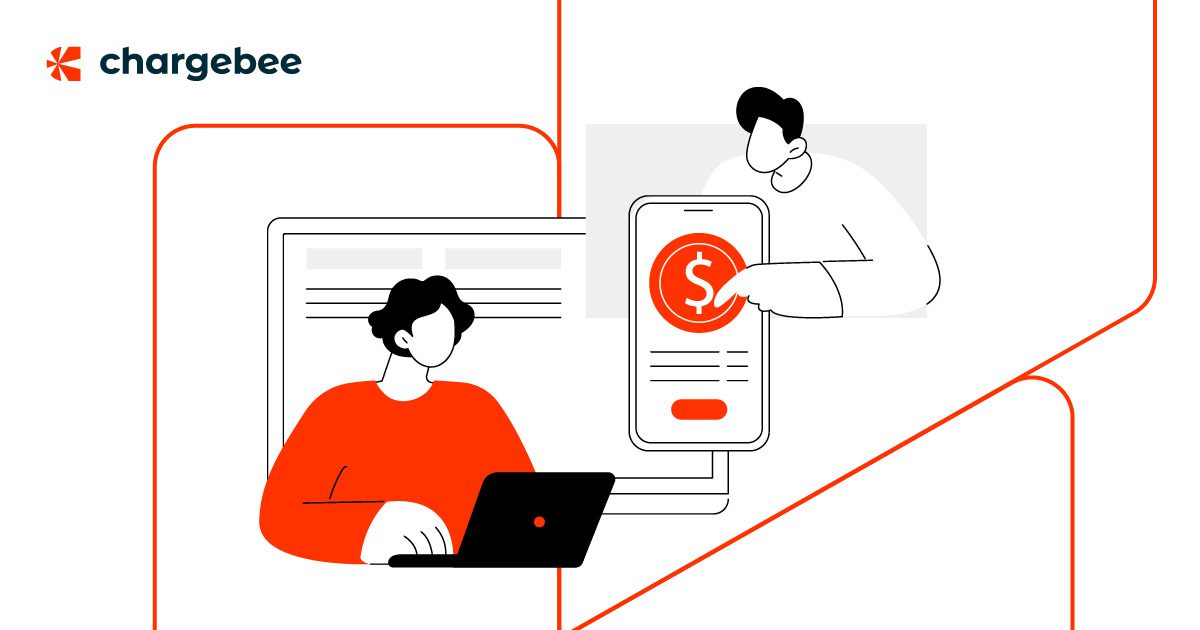Subscriptions can be incredibly useful for simplifying the customer buying process, but for SaaS businesses whose customer usage varies, choosing the right pricing model can be tricky. One of the most important aspects of a pricing model is its scalability, meaning how it scales from one customer to another.
For example:
Take a cloud computing service with several enterprise-level customers who pay a monthly subscription fee. In certain months, there are four or five customers whose usage skyrockets, impacting your operating costs.
Isn’t it unfair that these customers pay the exact monthly subscription charges, especially when some customers add to your overheads and operations costs? It’s difficult to predict the changes in customer usage, and it’s undoubtedly challenging to control it. After all, they are paying their subscription cost with an uncapped agreement.
In this scenario, what’s required is a pricing model that takes two things into account: 1. Customer’s usage and 2. How it affect your costs?
That’s where metered billing comes in. (Also known as pay-as-you-go or usage-based billing.)
This article will give you a complete breakdown of what metered billing is with examples, benefits, and challenges. It will help you make a more informed decision about whether metered billing is the right choice for your business.
To navigate straight to the section which interests you most, click the links below:
What Is Metered Billing?
Examples of Metered Billing
4 Benefits Of Metered Billing:
#1: It’s Fairer for Your Customers
#2: Leads to Higher Customer Lifetime Value
#3: Offers Insights Into Customer Behavior and Usage
#4: It Puts Power in the Hands of Customers
2 Challenges Presented By Metered Billing
#1: Pricing Model Compatibility
#2: Unpredictable Revenue
Conclusion
What Is Metered Billing?
In subscription-based billing scenarios where single users get more share of usage and drive your overheads up for your company, metered billing can be a more suited approach.
Metered billing is a billing structure that charges users based on their monthly usage, such as the amount of storage space they use or the number of API calls completed within that month.
Typically, metered billing incorporates a unit of usage and charges a fixed dollar amount per unit.
Of course, metered billing may not be appropriate for all business types.
More complex SaaS platforms with multiple products and features may struggle to break their service down into these bite-sized chunks.
A good rule of thumb is this: if your company’s overheads or running costs increase directly to customer usage, you could be a prime candidate for switching to metered billing.
Let’s look at some examples of companies that use metered billing.
Examples of Metered Billing
It’s worth noting that metered billing is not an entirely new phenomenon. It’s more prevalent in the B2C space, with most power providers taking a usage-based approach (though they may also incorporate a fixed daily charge) to your utility bill. For example, the ridesharing company Lyft uses metered billing, where the user pays based on the number of miles traveled.
Companies that incorporate usage billing in the B2B SaaS world include cloud data warehousing companies like Snowflake, APIs by Amazon Web Services, and VoIP & communications platforms like Twilio.
Here are some commonly seen types of metered billing with examples:
Per-unit Billing
In this type of metered billing, the users are charged a per-unit price. The ‘unit’ can change from business to business. For a VoIP phone company, this may be ‘per minute.’ Amazon Web Services (AWS) uses APIs as the unit in the API gateway pricing.
Stripe is another example of pay-as-you-go pricing that uses per-unit billing. They bill their users per successful card charge.
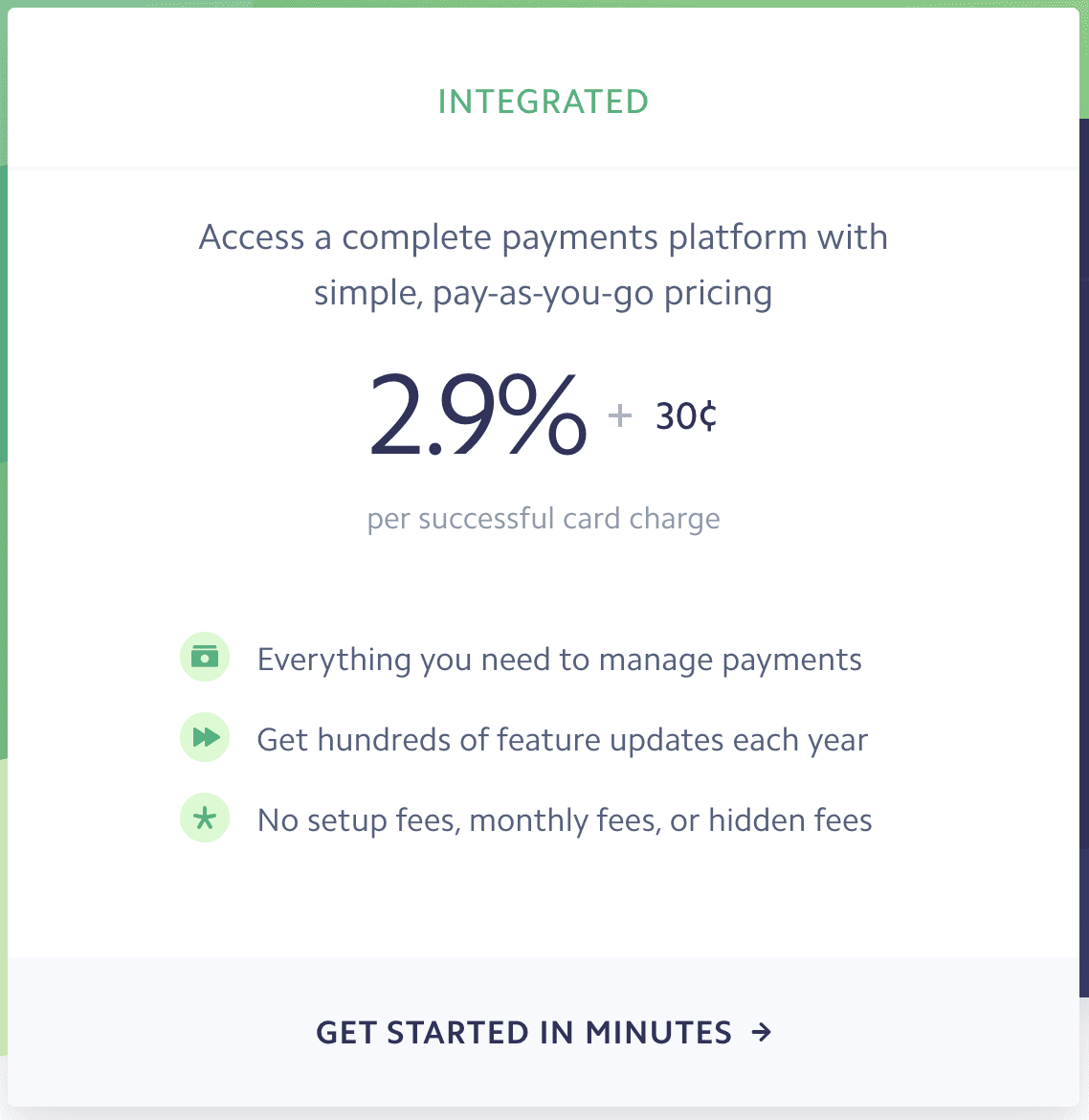
Overage-based Billing
In this type of metered billing, users get a fixed quantity of units, and an extra overage price is charged for additional usage. Matomo, a web analytics platform, is a great example of this. Their metered pricing model is based on how many pageviews a site gets. For additional pageviews, users are charged an overage.
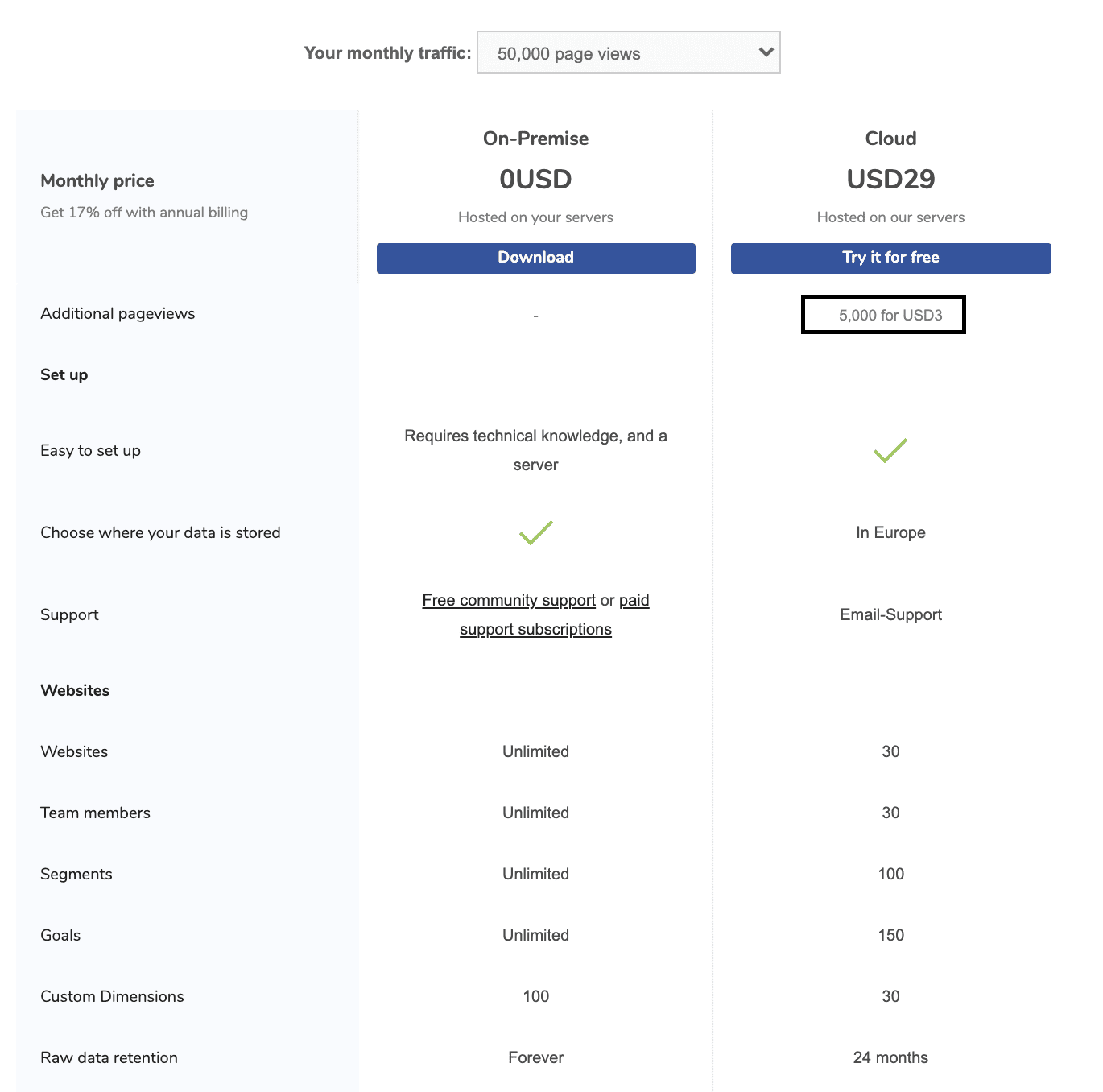
Volume-based Billing
In volume-based billing, the per-unit charges differ depending on total usage during the billing cycle. An example of volume-based metered billing is TheChecker, a tool used for email list verification. They charge their users based on the number of emails in their list and even allow them to purchase ‘bulk credits’ for future use.
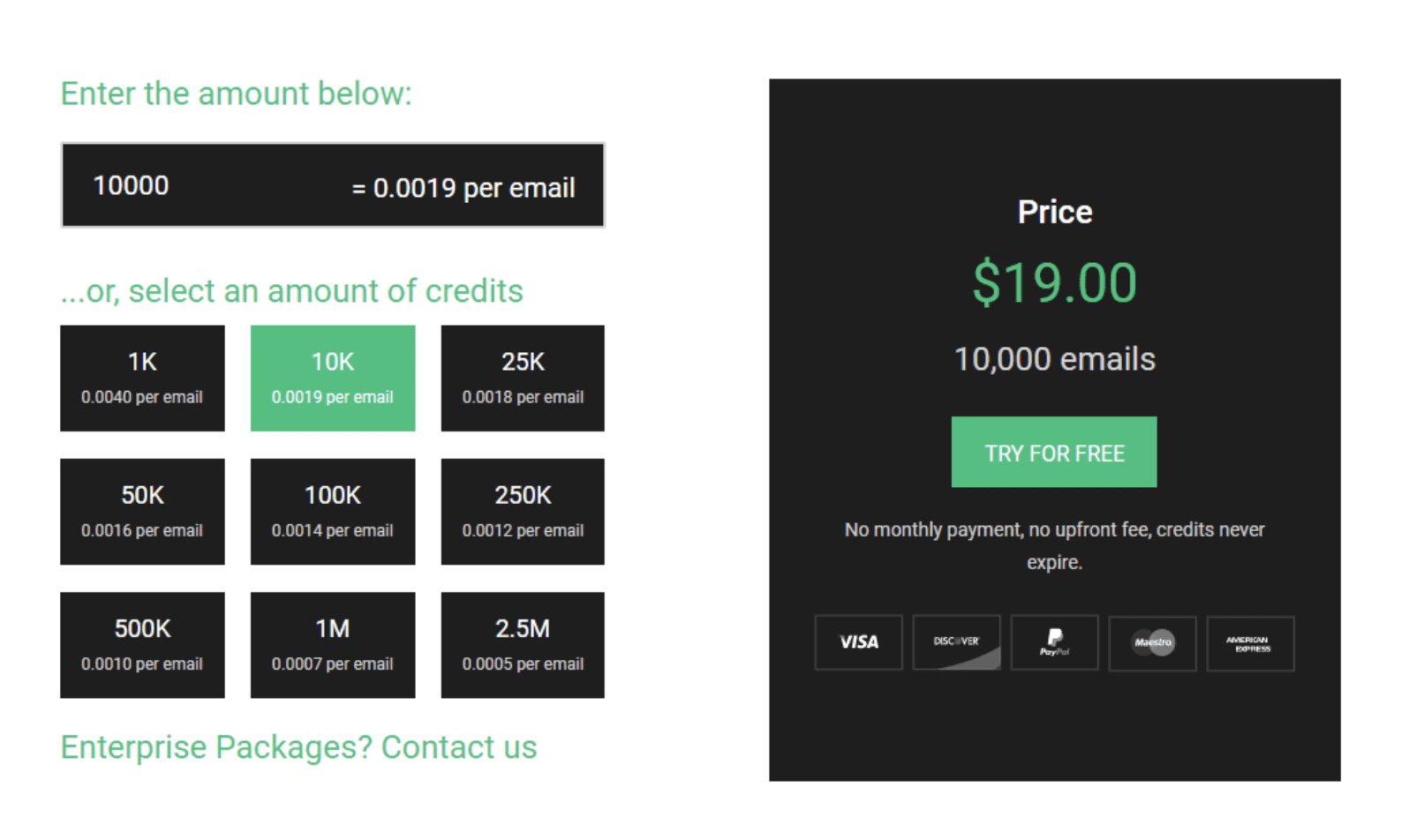
Tiered Usage Billing
In tiered-based usage billing, users are charged depending on the usage quantities per tier during the billing cycle.
Take Zapier’s pricing, for example. Zapier has tiered usage pricing, with each tier stipulating how many ‘tasks’ are included in that tier. As specified by Zapier, a task is ‘every time a Zap successfully moves data or takes action for you.’
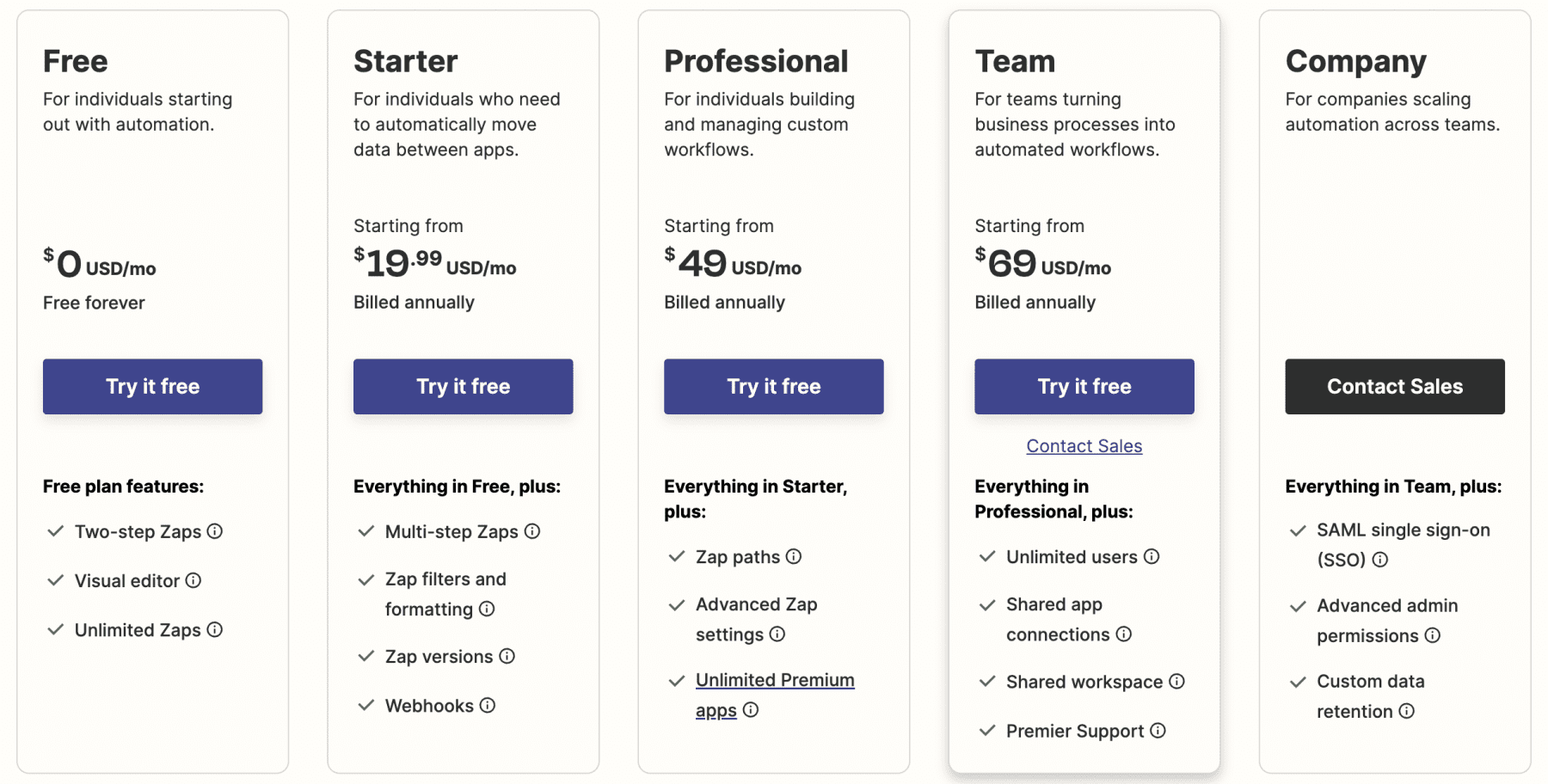
Four Benefits Of Metered Billing
Metered billing can be a compelling and worthwhile avenue to explore if your company is a good fit for the model. Here are a few ways your business can benefit from implementing a usage billing pricing model.
1. It’s Fairer for Your Customers
A major benefit of using metered pricing is the perceived fairness of the pricing model. That’s because your customers can see the specific value of their actions and consumption, knowing that the more they use your product or service, the more they’ll pay.
We take comfort in knowing that when we jump in a taxi, we’ll be paying for a fare based on the distance of our trip. If you’ve ever had a cab driver attempt to negotiate a fixed fare, you’ll understand the feeling that you may not be getting a fair deal.
Using an equitable pricing model might seem obviously positive for both customers and businesses, but there are a few hidden benefits to this approach as well. One of which is the impact on customer retention rates.
It goes without saying that a fair and just pricing model leaves customers feeling happier. But when 68% of customers according to a survey by SalesForce leave a brand because of poor customer experience, you can see how increasing customer happiness can impact your potential earnings.
Deciding between subscription billing and metered billing can mean significant changes for established SaaS companies. If you’ve adopted an inappropriate pricing model, even if the price point is correct, it becomes very difficult for customers to understand the value that your company offers.
MessageBird, an SMS, Voice, and Chat API, is a great example of a growing SaaS company that got its pricing right from the outset, opting for metered billing over subscription invoicing for its API integrations.
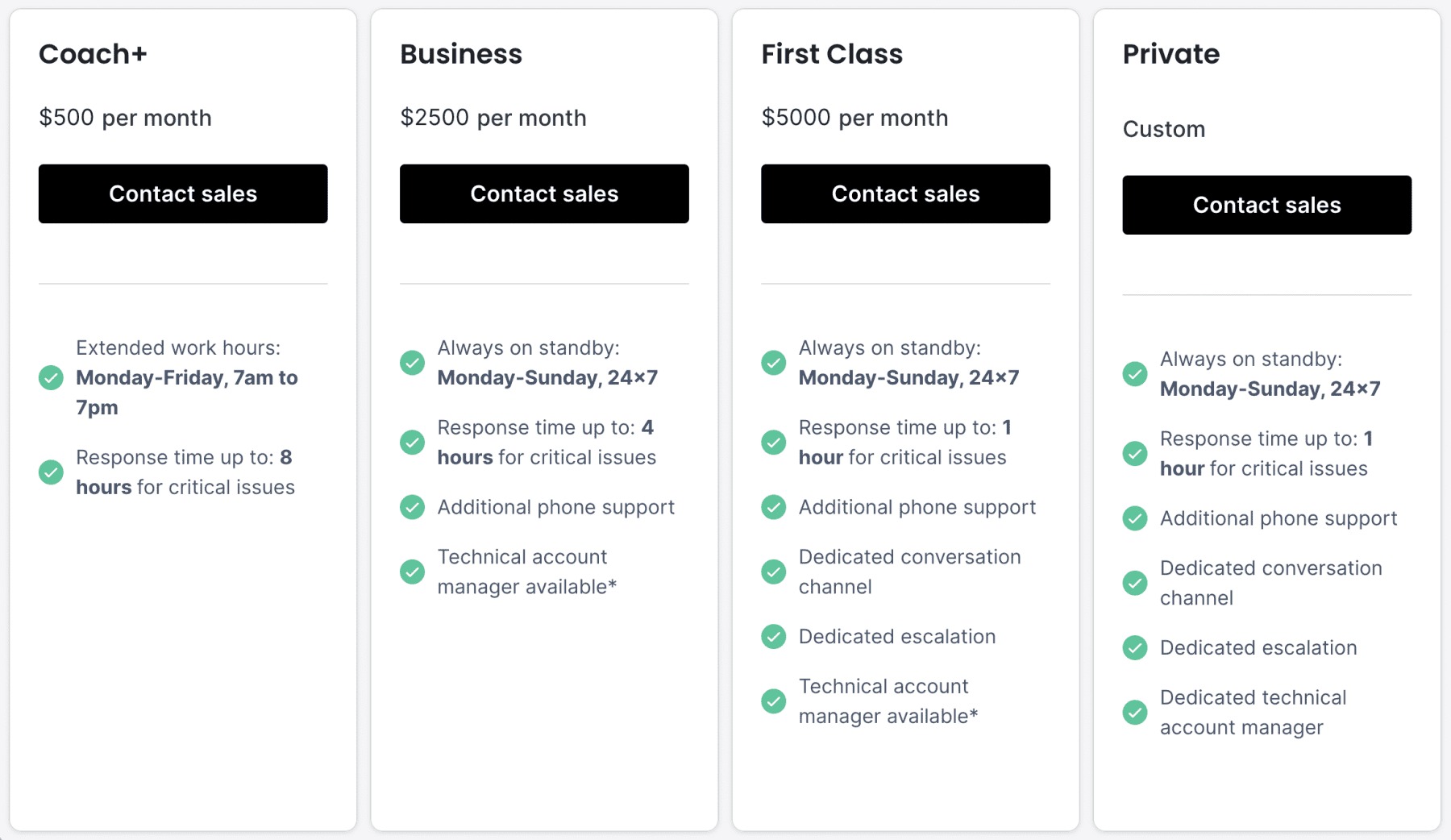
2. Leads to Higher Customer Lifetime Value
If there is one metric SaaS businesses love to track (and hopefully drive upwards), it’s CLV. If your company is a good fit for metered billing, you could also look forward to increases in CLV.
Those increases don’t simply come as a result of customers paying more; they’re a consequence of improved data and reporting on customer behavior.
To accurately invoice customers for their usage, you’ll need to be able to track and report on that usage. You’ll probably want to be able to do that in real-time too, so your customers know exactly where they’re at during the month.
As a result, you’ll have access to in-depth, time-specific usage data that tells you exactly when and in what quantities your customers are using your product or service.
If you’re a savvy marketer, you can then use the information to further influence customer behaviors by creating targeted guides and marketing campaigns that see your customers getting even more value out of your product.
Here’s an example: It’s not uncommon for customers to leave certain aspects of a given software untouched, purely because they don’t understand them properly.
By tracking usage patterns and identifying trends in non-usage, you can create marketing collateral to educate such clients and get them to use more features of your product, which you can in turn invoice for.
And because the CLV calculation uses Average Order Amount (AOA), you consequently improve your CLV when you lift the AOA.
| Formula for CLV (Customer Lifetime Value): MT x AOA x AGM x ACR | |
| MT | Number of Monthly Transactions |
| AOA | Average Order Amount |
| AGM | Average Gross Margin |
| ACR | Average Customer Retention (in Months) |
#3: Offers Insights Into Customer Behavior and Usage
The insights that a metered billing model can offer your business can improve more than just customer lifetime value; they can help you understand the need for potential future developments.
A metered billing system means you need to be able to track a customer’s actual usage in real-time, which can give your product development additional valuable insights into the way your customers are using your product beyond simply login times and frequencies.
Not only this but because you’re able to track this in real-time, you can also display it in real-time.
Giving your customers an accurate and timely usage record allows them to feel more empowered and ensures they can accurately predict their end-of-month charges throughout the billing cycle.
This will ensure no nasty surprises come towards the end of the month and contribute to overall customer happiness and retention rates.
There’s an added benefit for your sales team, too, as they may also be able to access real-time customer usage and influence potential additional use.
4. It Puts Power in the Hands of Customers
Though, in general, customers have come to terms with the subscription plan, people still aren’t huge fans of being locked into contracts.
That’s precisely why companies like internet service providers always have to throw something in for free to ‘sweeten the deal’ and to encourage them to make a two-year commitment.
Companies can put the power back in the customer’s hands by implementing a metered billing method. This is beneficial to both customers and businesses. The table below shows that SaaS companies like Snowflake, Twilio, and MongoDB with elements of metered billing are experiencing faster revenue growth.
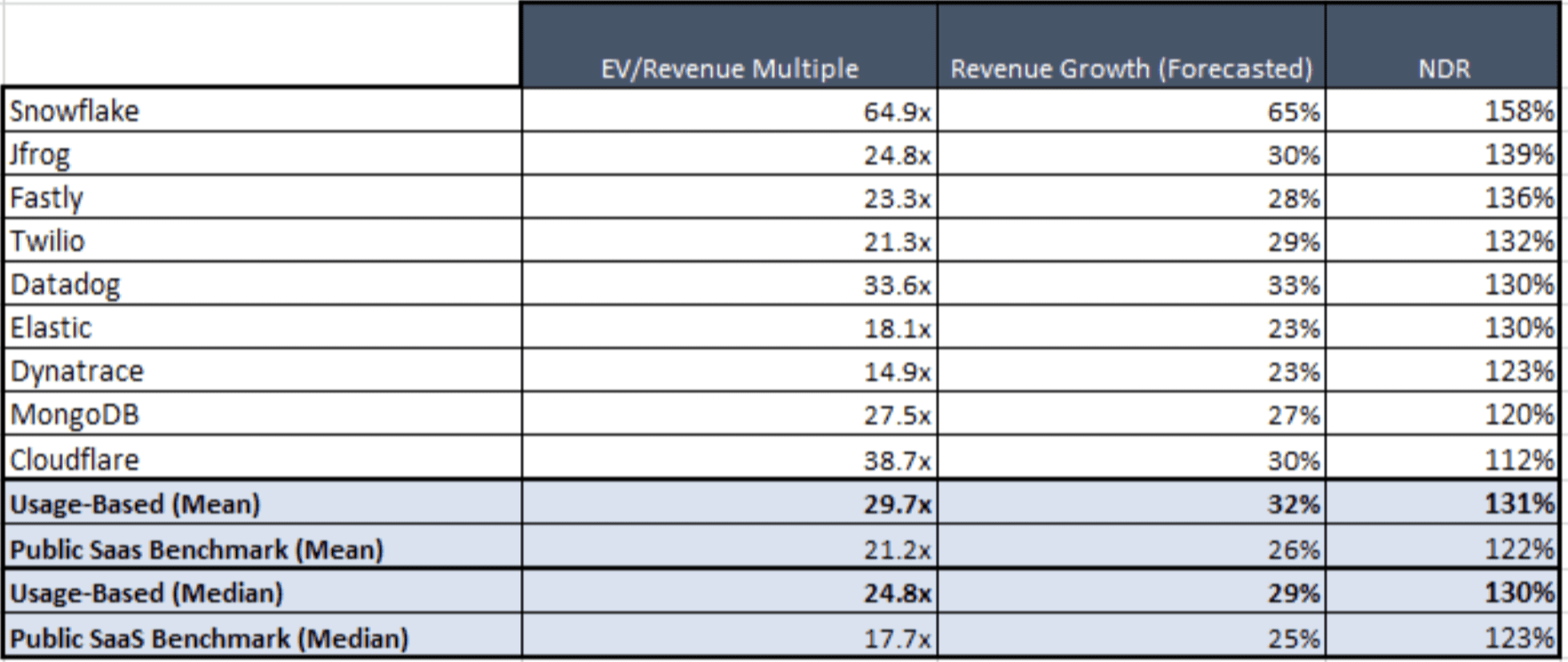
(Source)
Additionally, if you’re planning on adopting metered billing as your only form of charge, instead of a combination of methods, you’ll also be making the decision-making process easier for clients.
SaaS pricing can be pretty overwhelming, especially when there are several different options for company size, billing period, and payment methods.
Two Challenges Presented By Metered Billing
Metered billing isn’t appropriate for every company. There can be a number of reasons why a flat fee or recurring charge might actually be a better option, depending on your business model.
Let’s look at two challenges that usage-based payment can present and how they might impact your company’s future.
1. Pricing Model Compatibility
Metered billing does not work if you cannot accurately pinpoint specific tasks that users regularly undertake and then assign a relevant dollar amount to them.
For some companies, the product may simply be too complex for a metered billing charge to make sense.
Consider a sales CRM such as Pipedrive.
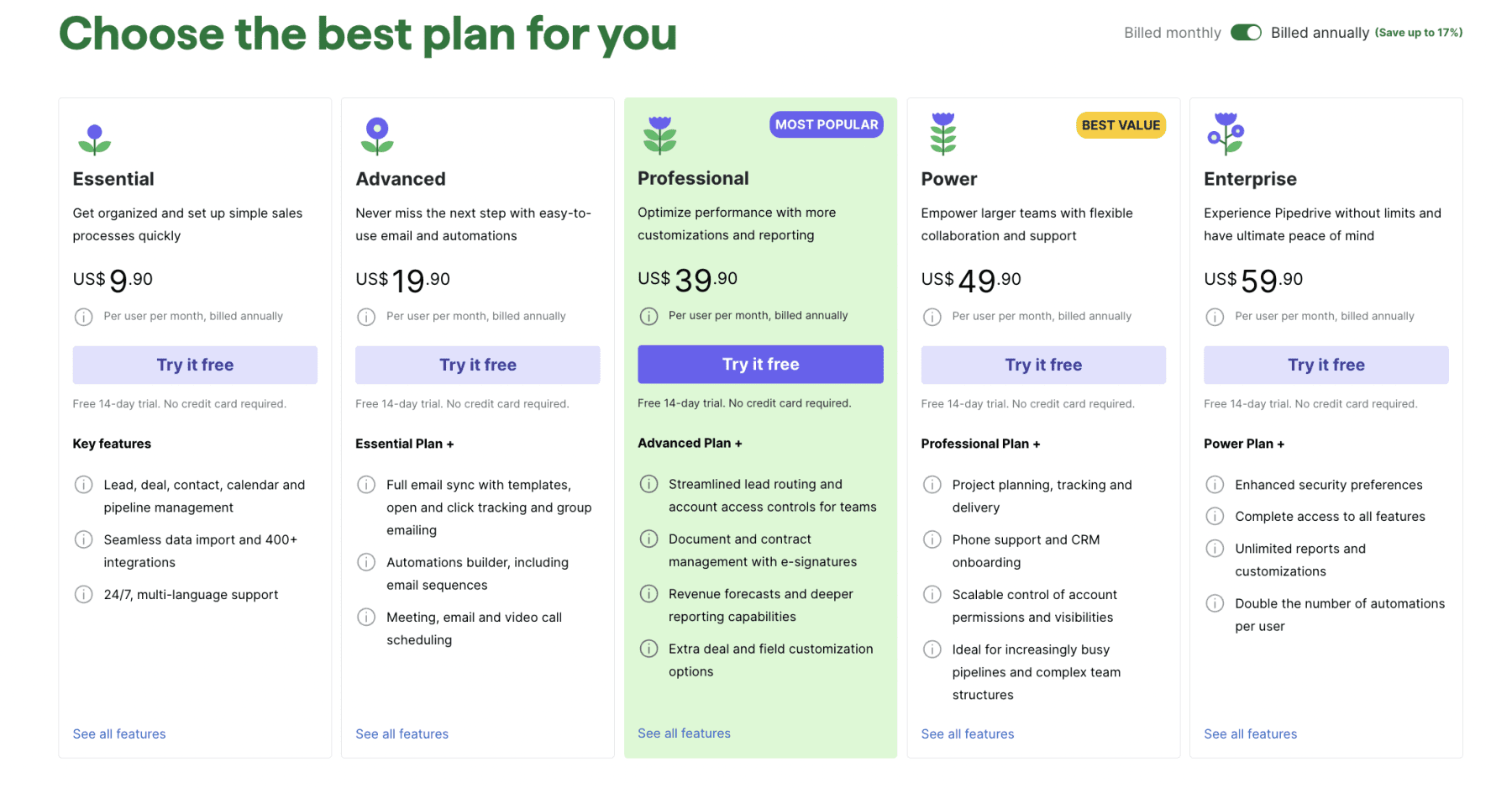
Their software simply has too many features to implement metered billing effectively. They’d need to assign charges to each individual action, which would be incredibly complex. This is why they’ve opted for another common SaaS pricing model: subscription billing.
You’ll also need to examine your current customers’ actual usage before opting to implement a meter billing model. If their usage doesn’t vary much month-on-month, there may not be any real benefit in metered billing.
As is the case with every pricing change, you’ll need to convince your customers that this is a worthwhile change. The challenge is to describe how this pricing model change benefits them accurately.
The best and most accurate way to determine whether metered billing is an appropriate model for your service is to consider your company’s costs.
If your costs are fixed, that is, they don’t change with fluctuations in customer usage, then it might not be a good fit.
If, however, your overheads are directly impacted by increases in customer usage, and you find yourself with higher costs in months that are associated with high usage amounts, then metered billing could be a smart option, especially for managing profit margins. That’s why cloud computing, API, cloud storage, and data companies tend to be good fits for metered billing pricing models.
2. Unpredictable Revenue
A major benefit of the subscription model is that it enables you to accurately predict your monthly revenue based on the number of active subscriptions you have.
With metered billing, this is a bit more difficult.
Most SaaS companies use the following data to predict their future revenues:
- Revenues from existing contracts
- Revenues from renewal contracts
- Revenues from new contracts (projected)
Though this information can still be used to forecast revenue when using metered billing, it is understandably more volatile and potentially less accurate.
That’s why it’s important to understand whether your overheads fluctuate with usage.
If they are fixed, and you switch to metered billing, you’ll still have the same outgoings even when usage drops. Of course, this also means you have the potential of experiencing months of high usage where your outgoings are relatively low, but you’re taking a risk here.
On the other hand, if your company’s overheads are directly tied to total customer usage, then your associated costs will fluctuate with that usage, so you know that when outgoings are high, revenue will also be.
If you’re savvy, though, you can counteract this and make your revenue more predictable. Rather than opting for an all-out usage-based billing structure, which essentially has a $0 monthly minimum and no guaranteed revenue for your business, you could implement a hybrid pricing model.
Hybrid models integrate subscription billing with metered billing. Customers pay minimum charges in a base plan each month to access a certain number of features or usage instances, paying over and above that for each additional instance.
In the above example, Clearbit offers customers 1,000 API calls per month for a fixed charge, with each API call after that charged individually.
Another solution is to offer both options.
Mailgun, a transactional email API service, allows users to choose from monthly packages or a Pay As You Go plan, which ensures customers only pay for what they send.
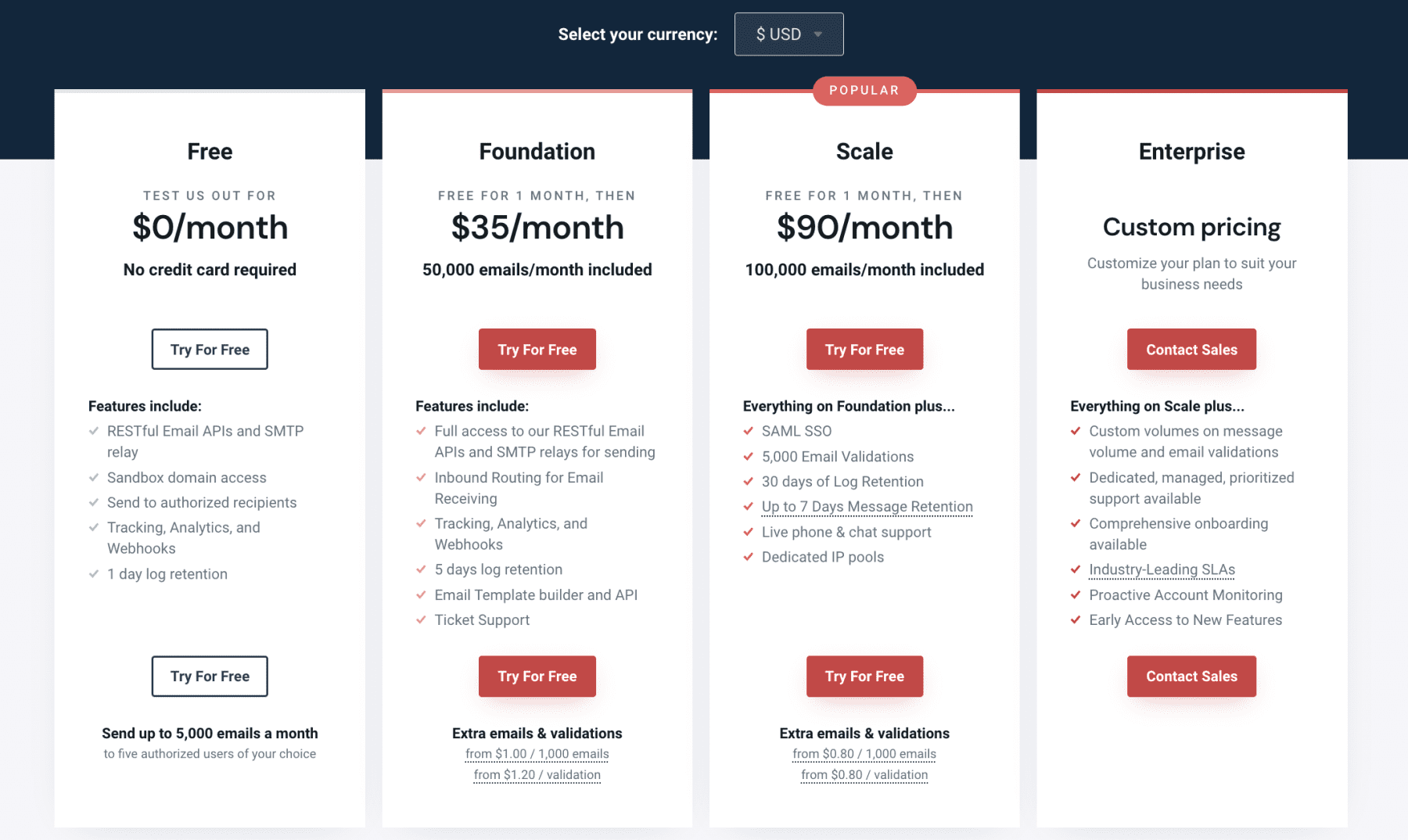
Conclusion
Whether or not metered billing is suitable for you depends on your product and the industry. That said, it’s worth exploring if your costs are directly tied to customer usage. You can also offer blended usage and subscription billing.
If you’re ready to incorporate metered billing in your SaaS invoicing processes, Chargebee’s subscription management software is designed to help you grow and retain revenue, mitigate churn, and scale your B2B SaaS.
